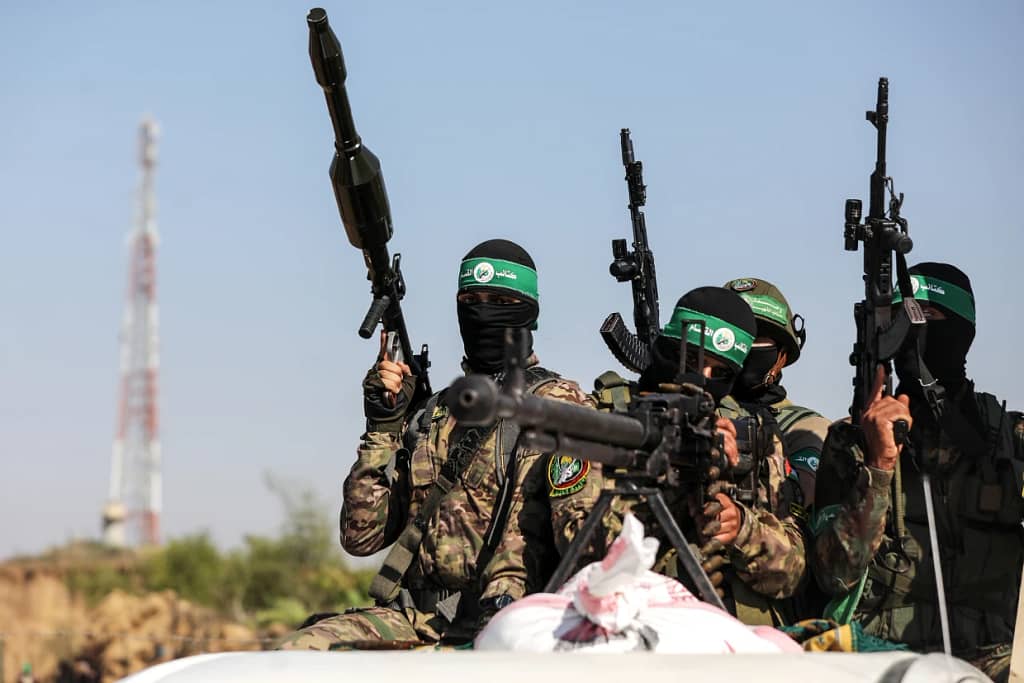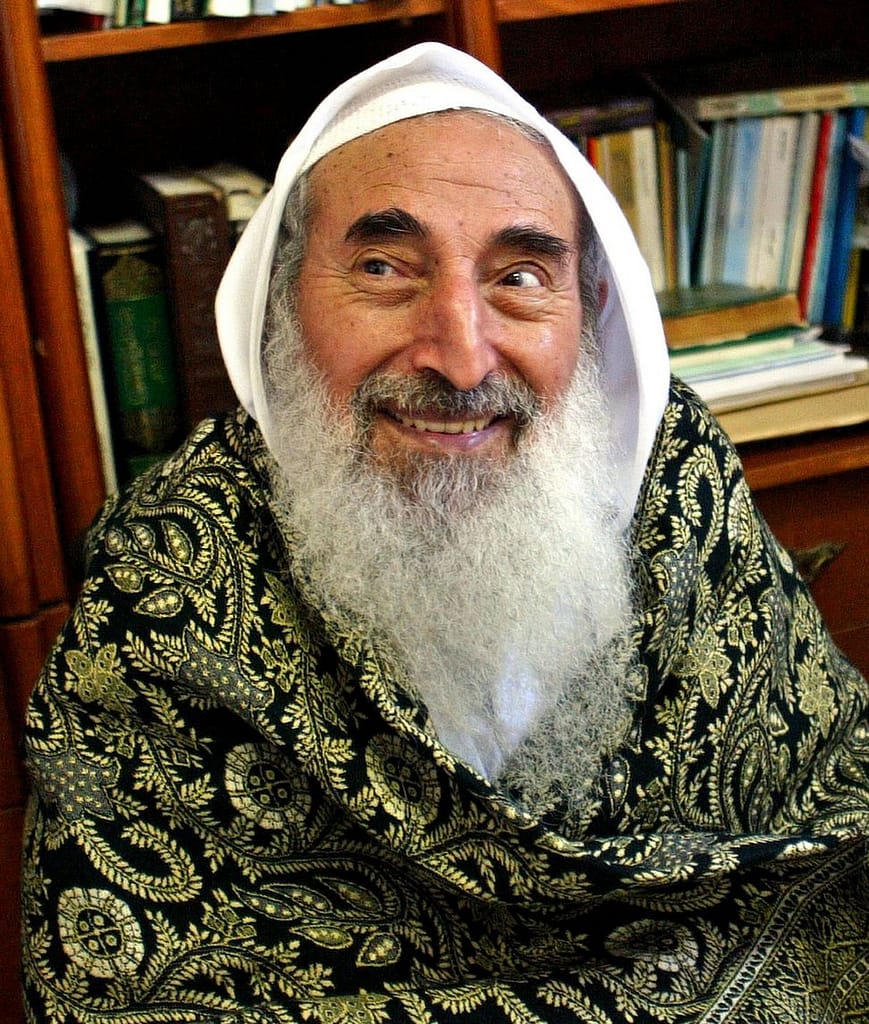Hamas, an acronym for Harakat al-Muqawama al-Islamiyya (Islamic Resistance Movement), emerged during the First Intifada (1987-1993). Hamas officially came into existence in 1987, but its ideological roots can be traced back to the Muslim Brotherhood, a transnational Islamic organization founded in Egypt in 1928. The Muslim Brotherhood’s influence spread across the Arab world, promoting Islamic values, social justice, and resistance against foreign domination.

Hamas’s ideology is deeply rooted in Islamist principles, emphasizing the role of Islam in both personal and collective aspects of life. Unlike the secular orientation of the PLO, Hamas sought to combine resistance against Israeli occupation with the promotion of Islamic governance and values The organization’s charter, published in 1988, outlines its core principles, including the rejection of the Israeli state’s legitimacy and the insistence on the establishment of an independent Palestinian state on all of historic Palestine.
Social Services and Grassroots Support
Hamas distinguished itself not only through armed resistance but also through its extensive social services network. Recognizing the needs of the Palestinian population, especially in the Gaza Strip and the West Bank, Hamas established schools, hospitals, and charitable organizations to address societal challenges exacerbated by the Israeli occupation. These social services played a crucial role in garnering support among Palestinians, particularly those who felt disenfranchised and marginalized.
Challenges and Internal Struggles
Hamas’s journey has been marked by challenges and internal struggles, reflecting the complex nature of Palestinian politics. The organization faced resistance from rival Palestinian factions, particularly Fatah, the dominant faction within the PLO. Tensions between Hamas and Fatah erupted into violence, culminating in the 2007 Hamas takeover of the Gaza Strip, further deepening the political divide between the two groups.
The internal divisions within Palestinian politics have complicated efforts to present a united front against Israeli occupation. However, many Palestinians argue that these internal struggles should not overshadow the shared goal of achieving self-determination and an end to the occupation.
Ahmed Yassin

Ahmed Yassin, a prominent figure in the Palestinian resistance movement, was the founder of Hamas and played a pivotal role in shaping the trajectory of the struggle for Palestinian self-determination. As the founder of Hamas, Yassin’s life and legacy are marked by his commitment to the cause of liberation from Israeli occupation.
Early Life and Activism
Ahmed Yassin was born in 1937 in the village of al-Jura, located in British Mandate Palestine. His family, like many others, experienced the upheavals of the Nakba in 1948, resulting in their displacement to the Gaza Strip. Yassin’s early years were marked by the challenges of life as a refugee, laying the foundation for his deep-rooted commitment to the Palestinian cause.
As a young man, Yassin became actively involved in Islamist and social welfare activities. Inspired by the Muslim Brotherhood’s emphasis on Islamic principles and social justice, Yassin sought to address the needs of Palestinians, particularly those living in impoverished and marginalized conditions. His commitment to helping the disenfranchised would later manifest in the establishment of social services through Hamas.
Yassin’s vision for Hamas was deeply rooted in Islamic principles, emphasizing the role of religion not only as a personal guide but also as a source of inspiration for collective resistance. The organization’s charter, published in 1988, reflected Yassin’s vision for an independent Palestinian state founded on Islamic principles.
Ahed Yassin’s Leadership and Legacy
One of the distinguishing features of Yassin’s leadership and Hamas’s approach was the emphasis on providing social services to the Palestinian population. Recognizing the dire conditions in which many Palestinians lived, especially in the Gaza Strip, Yassin and Hamas established schools, hospitals, and charitable organizations to address the social and economic challenges exacerbated by the Israeli occupation.
Ahmed Yassin’s life was tragically cut short in 2004 when he was assassinated in an Israeli airstrike. His death marked a significant loss for the Palestinian resistance movement, and Yassin became a symbol of steadfastness and resilience in the face of adversity.
Yassin’s legacy is celebrated as a testament to the unwavering commitment to the Palestinian cause. His vision for Hamas, as an organization that combines armed resistance with social welfare, continues to resonate among Palestinians who view it as a response to the ongoing occupation and displacement.
Yassin and Iran

Ahmed Yassin and Iran share a complex relationship that has evolved over the years. The ties between Yassin and Iran are characterized by a mix of geopolitical considerations, ideological alignment, and strategic collaboration in the broader context of the Israeli-Palestinian conflict.
The relationship between Ahmed Yassin and Iran dates back to the early years of Hamas. During this period, Iran, under the leadership of Ayatollah Ruhollah Khomeini, sought to expand its influence in the Muslim world and support movements that aligned with its anti-Israeli and anti-American stance.
Hamas, with its Islamic ideology and commitment to armed resistance against Israeli occupation, found common ground with Iran’s revolutionary fervor. Iran, in turn, saw in Hamas a valuable ally in its efforts to challenge Israeli dominance in the region.
Ideological Affinities
One key aspect of the relationship between Ahmed Yassin and Iran is the shared Islamist ideology. Both Yassin and Iranian leaders emphasized the importance of Islamic principles in guiding political action, and this ideological alignment provided a foundation for collaboration. Yassin’s Hamas and Iran also found common ground in their opposition to the Oslo Accords. Both considered the accords a compromise of Palestinian rights and a concession to Israeli interests, leading to further alignment of their goals.
Strategic Collaboration with Hamas
Iran has been a significant financial and military supporter of Hamas, providing the organization with resources to strengthen its armed wing and resist Israeli occupation. The Iranian government, through channels like the Islamic Revolutionary Guard Corps (IRGC), has reportedly supplied Hamas with weapons, training, and funding. This collaboration has enabled Hamas to enhance its military capabilities, particularly in the Gaza Strip. While the extent of Iranian support has been a subject of debate, with some sources exaggerating the level of assistance, there is consensus that Iran has played a role in empowering Hamas militarily.
Regional Dynamics
The relationship between Hamas and Iran is situated within the broader context of regional dynamics. Iran’s support for Hamas is often seen as part of its broader strategy to counter Israeli influence in the Middle East and project its own power in the region. The geopolitical rivalry between Iran and Israel, exacerbated by sectarian tensions between Shia Iran and Sunni-majority Arab states, further shapes the dynamics of their relationship with Palestinian factions.
Iran’s support for Hamas has also been a point of contention within the Arab world, where traditional alliances have been strained by geopolitical shifts. While some Arab states view Iran’s involvement in the Israeli-Palestinian conflict with suspicion, others, particularly those critical of Israel, may see Iran as a valuable ally in supporting the Palestinian cause.
Evolving Dynamics
The dynamics of the relationship between Ahmed Yassin, Hamas, and Iran have evolved over time, shaped by changing regional circumstances. Yassin’s assassination in 2004 marked a significant turning point, leading to leadership changes within Hamas. While the organization has maintained ties with Iran, subsequent leaders have sought to balance these relationships with other regional actors.
The Syrian Civil War and the subsequent rift between Iran and Hamas over their differing positions on the conflict have further complicated the relationship. Hamas’s decision to distance itself from the Syrian government, a key Iranian ally, demonstrated the organization’s efforts to navigate a complex regional landscape and maintain a degree of independence.
Conclusion
The origins and history of Hamas and Ahmed Yassin are deeply intertwined with the historical trajectory of the Israeli-Palestinian conflict. Emerging from the crucible of resistance during the First Intifada, Hamas represents a complex blend of religious ideology, grassroots support, and armed resistance against Israeli occupation.
